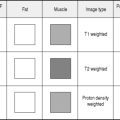Chapter 10 Venous system
Peripheral Venography
LOWER LIMB
Patient preparation
The leg should be elevated overnight to lessen oedema if leg swelling is severe.
Technique
CENTRAL VENOGRAPHY
SUPERIOR VENA CAVOGRAPHY
Equipment
Rapid serial radiography unit, or preferably a C-arm with digital subtraction angiography.
Technique
INFERIOR VENA CAVOGRAPHY
Technique
PORTAL VENOGRAPHY
Indications
Patient preparation
Technique
For trans-splenic approach
Transhepatic Portal Venous Catheterization
Technique
Ultrasound
Duplex
Duplex scanning involves a combination of pulsed Doppler and real-time US for direct visualization. Expansion and filling of the normal echo-free lumen can be identified but slow-moving blood may be misinterpreted as thrombus. Valsalva manoeuvre will cause expansion in the normal vein but is not a totally reliable sign. Pulsed Doppler assesses flow. Enhancement of flow due to respiratory excursion or manual calf compression suggests patency. The most reliable sign of patency is compressibility. Direct pressure with the US probe over the vein will cause the normal vein to collapse. If thrombus is present, this will not occur.
LOWER LIMB VENOUS ULTRASOUND
Technique
UPPER LIMB VENOUS ULTRASOUND
Technique
The examination can be extended to include the cephalic, basilic and forearm veins.
Impedance Plethysmography
This technique depends on the principle of the capacity of the veins to fill and empty in response to temporary obstruction to venous outflow by occlusion of the thigh veins with a pneumatic cuff. Changes in calf volume produce changes in impedance measured by electrodes applied to the calf. The technique is demanding and requires skilled personnel. Clinical states that impair venous return, such as cardiac failure and pelvic pathology and also arterial insufficiency, produce abnormal results. Many centres use impedance plethysmography in conjunction with clinical pretest probability scoring and/or plasma D-dimer assay to identify patients who do not need to proceed to US or venography.1
Radioisotopes
COMPUTED TOMOGRAPHY
Multidetector CT (MDCT) with standard i.v. contrast and scan delay protocols for the chest or abdomen/pelvis (see Chapter 1) is very effective for detection of compression or thrombosis of major veins including the superior and inferior vena cavae, iliac and renal veins.
In a group of selected patients with suspected pulmonary embolus (PE), MDCT of the lower limbs from iliac crest to popliteal fossa, 2 min after completion of CT pulmonary angiography (indirect CT venography), may be used as an alternative to US for detection of lower limb deep venous thrombosis. However, there is a significant associated radiation dose and there is no diagnostic advantage over US.1 Indirect CT venography is not recommended in patients with suspected deep vein thrombosis, but without suspected PE. It should only be used as an alternative to US in patients undergoing CT for suspected PE for whom identification of DVT is considered necessary2 or those with a high probability of PE, including patients with history of previous venous thrombo-embolism and possible malignancy.3
1 Goodman L.R., Stein P.D., Matta F., et al. CT venography and compression sonography are diagnostically equivalent: data from PIOPED II. Am. J. Roentgenol.. 2007;189(5):1071-1076.
2 Thomas S.M., Goodacre S.W., Sampson F.C., et al. Diagnostic value of CT for deep vein thrombosis; results of a systematic review and meta-analysis. Clin. Rad.. 2008;63:299-304.
3 Hunsaker A.R., Zou K.H., Poh A.C., et al. Routine pelvic and lower extremity CT venography in patients undergoing pulmonary CT angiography. Am. J. Roentgenol.. 2008;190(2):322-326.
Magnetic Resonance
Standard guidance applies on selection of patients suitable for MRI examination (see Chapter 1).
The multi-planar imaging capabilities allow demonstration of complex venous anatomy and cine sequences, including velocity-encoded phase mapping, can provide functional information regarding direction and velocity of venous blood flow. MRI can be used to ‘age’ thrombus and differentiate acute from chronic clot. MRV does not involve ionizing radiation and i.v. gadolinium has a wider safety profile than iodinated contrast used for CT. Imaging can be performed using slice-by-slice (two-dimensional) or volume (three-dimensional) acquisition. Post-processing techniques, including maximum intensity projection (MIP) images, are used.
MR venography offers unique diagnostic possibilities for abdominal, pelvic and thoracic veins,2 and development of blood pool contrast agents (see Chapter 2) will further improve clinical usefulness of these procedures.3
1 Sampson F.C., Goodacre S.W., Thomas S.M., et al. The accuracy of MRI in diagnosis of suspected deep vein thrombosis: systematic review and meta-analysis. Eur. Radiol.. 2007;17:175-181.
2 Butty S., Hagspiel K.D., Leung D.A., et al. Body MR venography. Radiol. Clin. North Am.. 2002;40(4):899-919.
3 Prince M.R., Sostman H.D. MR venography: unsung and underutilized. Radiology. 2003;226(3):630-632.





